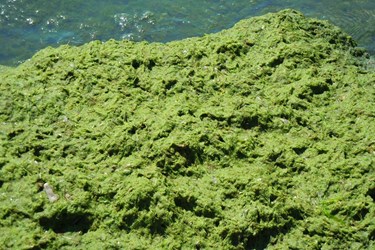Toxic Algae Blooms On The Move
Toxic algae blooms sometimes have ambitious travel itineraries, migrating through states and into previously unaffected water districts. The upshot is that utility operators who have never faced the toxic problem will need to be prepared for this possibility.
Plant operators are urging cities to pay close attention to toxic algae blooms after a massive growth hit the Ohio River and snaked its way downstream. The toxic algae outbreak travelled over 600 miles, through four states.
“[It] is forcing water utilities to reassess the threat from harmful algal blooms that are popping up increasingly around the nation. Treatment plant operators and researchers along the river were surprised by the large bloom and said it should be a warning to cities that get their water supply from lakes, rivers and manmade reservoirs,” the Associated Press reported.
Roger Tucker monitors algae sampling for the Louisville Water Co. in Kentucky. He had a word of advice for the industry: “You need to be ready and have a plan in place,” he said, per the report. “The Ohio River is proof of that.”
The Ohio River bloom had ambitious travel plans, according to the AP report:
The bloom appears to be winding down now, two months after being detected in the middle of August. It made its way from Wheeling, West Virginia, and past Cincinnati and Louisville, setting off warnings about boating and fishing in the river. Organizers canceled a swim from Cincinnati to northern Kentucky.
Toxin levels caught locals off guard. “What surprised many along the river was the unprecedented size and level of toxins detected in some areas — well above those found recently in algae-plagued western Lake Erie,” the report said.
Cities with algae preparedness plans often consider events in Toledo, OH, last year as a template for the kind of emergency they could face. Toxic algae contaminated the water supply and resulted in a tap water ban.
Ottawa County, OH, is one area that has tried to get emergency plans in place. In emergency crisis plans, schools are a top concern for Ottawa officials. They anticipate that, in case of an algae crisis, the school would need enough water to dole out to students and cook food in the cafeteria.
"As long as they have enough clean water on hand, schools would not have to shut down if toxic algae made Ottawa County's water unsafe to drink," the News Herald reported, citing a local official.
The county was less prepared two years ago, when "2,000 customers of a Northwest Ohio water supplier were told not to drink what came out of their taps," the Akron Beacon Journal reported.
Cyanotoxins, which are produced by blue-green algae, are on the EPA's Candidate Contaminant 3 List, which enumerates harmful contaminants for potential regulatory action.
For more stories on algal blooms, visit Water Online’s Nutrient Removal Solutions Center.
Image credit: "Lake Erie Algae, PutInBay OH," © 2010 AKZOphoto, used under an Attribution- NoDerivs 2.0 Generic license: http://creativecommons.org/licenses/bynd/2.0/
Copyright © 1996 - 2015, VertMarkets, Inc. All rights reserved. To subscribe or visit go to: http://www.wateronline.com
http://www.wateronline.com/doc/toxic-algae-blooms-on-the-move-0001

